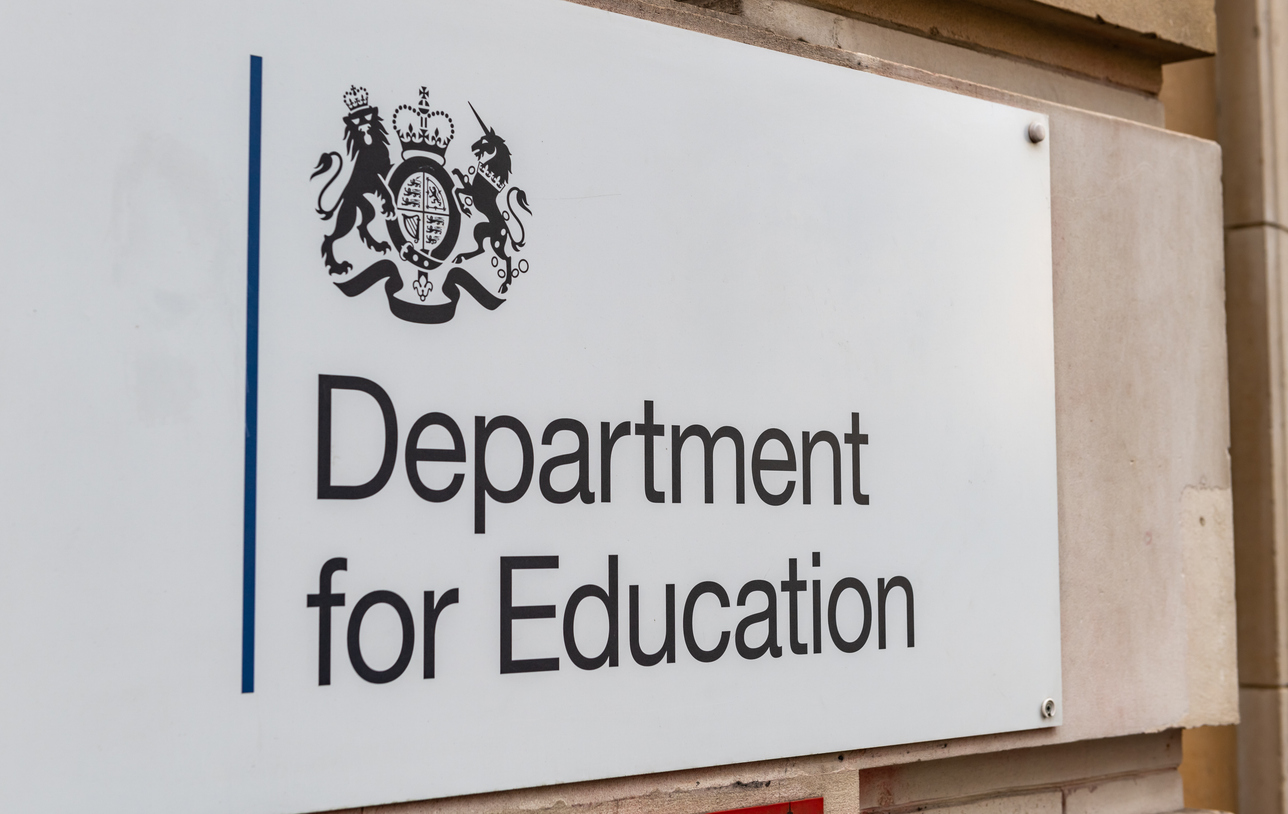The Office for Students is a creation of the 2017 Higher Education and Research Act, but this legislation was not the last word on the matter.
It has gained new powers and new responsibilities over the years, and – looking closely at the white paper – it looks set to expand its powers, capabilities, and capacity even further.
As the Department for Education, and as ministers and politicians more generally, make new demands of the regulator it needs to be given the power to meet these demands. And this generally needs to happen via the amendment of HERA, which almost always requires further primary legislation.
It is clear that much of the change that ministers expect to see in the higher education sector – as set out via the white paper – needs to happen via the action of the regulator.
Regulation, rebooted
The 2022 Skills and Post-16 Education Act gave OfS explicit powers to assess the quality of higher education with reference to student outcomes, protection from defamation claims based on regulatory decisions, and the duty to publish details of investigations.
The 2023 Higher Education (Freedom of Speech) Act, alongside the various measures linked directly to freedom of speech and academic freedom, attempted to grant OfS the power to monitor overseas funding – this was, in the end, not enacted.
These decisions to give OfS new powers and new duties will have been influenced by legal embarrassment (the student outcomes and defamation issues) and perceived threats (such as on overseas funding or freedom of speech), but measures are generally finessed in conversation with the regulator and its own assessment of powers that it needs.
It is fair to assume that OfS – famously careful around legal risk – would largely prefer to have more powers rather than less. The diversity of the sector, and the range of political and public concern about what providers actually get up to, mean that the regulator may often feel pressured to act in ways that it is not, technically, permitted to. This is not a risk limited to OfS – witness the Department for Education’s legal travails regarding Oxford Business College.
Aspects requiring primary legislation
The white paper offers the Office for Students a number of new powers to do things which – on the face of it – it can already do and has already done. What we need to keep an eye on here is where the amping up of these existing powers happens in a way that overrides safeguards that exist to prevent arbitrary and unfair regulatory action. It is already troubling that, unlike pretty much anyone else, the Office for Students is legally unable to defame a provider (for example by posting details of an investigation including details that are later shown to be false).
Quality
The Department for Education seems to labour under the misconception that OfS cannot restrict a provider’s ability to recruit on the basis of “poor quality”. It can – and has done so four times since the regulator was established. Nonetheless, the government will legislate “when parliamentary time allows” to give OfS these powers again using slightly different words – and probably modifying sections 5 and 6 of HERA to allow it to do so (currently, the Secretary of State cannot give OfS guidance that relates to the recruitment and admission of students).
This would be part of a wider portfolio of new powers for OfS, allowing it to intervene decisively to tackle poor quality provision (including within franchise arrangements), prevent the abuse of public money at registered providers, and safeguard against provision with poor outcomes for students).
Again – these are powers, in the broadest sense, the OfS already has. It has already intervene to tackle low quality provision (including poor quality outcomes for students) via the B3 and other B condition investigations and linked regulatory rulings. And it has already intervened on franchise arrangements (most recently opening an investigation into the arrangement between Bath Spa University and the Fairfield School of Business).
There will be a strengthening of powers to close down provision where fraud or the misuse of public funds is identified – and here it is fair to read across to concerns about franchise provision and the work of (“unscrupulous”) UK recruitment agents. Condition E8 – which specifically addresses the wider issues of fraud and misuse of public funds, currently applies only to new registrants: it is fair to ask why extending this to currently registered providers is not under consideration as a non-legislative approach. Clearly the infamous powers of entry and search (HERA section 61) and the power to require information from unregistered providers (HERA section 62) are not cutting it.
Linked to these, OfS will be able to build capacity to carry out more investigations and to do so at greater speed – for which in the first part we should read that OfS will get more money from DfE. It already gets roughly £10m each year, which covers things like running TEF and administering the freedom of speech complaints scheme – this is on top of around £32m in registration fees from the sector (also public money) which sounds like a lot but doesn’t even cover staff costs at OfS. We are awaiting a consultation on OfS registration fees for providers for the future, so it is possible this situation may change.
OfS’ proposed new quality regime is centred around TEF, a “section 25” scheme in the language of HERA. Schedule 2, section 2, of HERA is clear that a section 25 scheme can be used to vary the fee cap for individual providers. Indeed, it is currently used to vary the cap – if you don’t have a TEF award (at all) you can only charge a maximum of £9,275 next year. So no fancy legislative changes would be required to make fee uplifts conditional on a “higher quality threshold” if you happened to believe that a provider’s income per student should be determined by outcomes data from a decade ago.
Not strictly speaking “quality”, but OfS will also get stronger regulatory power to take robust action against providers that breach their duties under the Higher Education (Freedom of Speech) Act – beyond even fining providers (as it has recently done to the University of Sussex) and deregistering (or adding a condition of registration via conditions E1 and E2), a power it has had since HERA was passed. I’m not sure what would constitute more robust action than that.
Access and participation
The access and participation plan (APP) regime is a remnant of the work of the former Office for Fair Access (OFFA). The Higher Education Act 2004 gave this body the ability to call for and assess “access agreements”, with the approval of OFFA needed for a provider to charge higher fees. Section 29 of HERA gave the impression that handed these powers directly over to the Office for Students – but in actuality it gave a lot more direct power to the Secretary of State to specify the content of plans and the way they are assessed via regulations.
The proposals in the white paper look for a risk-based approach to APP, but at provider level – not the more general risks associated with particular groups of students that we find in the OfS’ current approach. Providers that do well at access and participation will benefit from streamlined regulation, for those that do not the experience may involve a little more pain.
The big change is that access and participation will now look in a lot more detail at postgraduate provision and the postgraduate student experience. And section 32(5)(b) of HERA specifically prohibits plans from addressing “education provided by means of any postgraduate course other than a course of initial teacher training”. So we could expect some kind of legislative action (it may be possible to do via regulations but if there is a bill coming then why not?) to address this issue. And besides that, there will be a load of regulations and guidance from the Secretary of State setting out what she would like John Blake or his successor to do.
Aspects requiring changes to the regulatory framework
Registration
In what is fast becoming a more closely coupled tertiary sector, OfS is set to become a primary regulator for every provider of higher education. There are three sets of providers that will be affected by this move:
- Further education colleges (FECs) delivering higher education (courses at levels 4 and above)
- Other providers delivering provision currently funded via Advanced Learner Loans (ALL)
- Other providers designated for student loan support, including those delivering courses via franchise and partnership arrangements.
In each of these cases, provision that is to all intents and purposes higher education is currently delivered without the direct oversight of the higher education regulator. This may be delivered with the oversight and approval of a higher education provider (franchise and partnership provision), or with the oversight of Ofqual (there are hundreds of these).
The regulation of this kind of provision within FECs is probably best understood – as things stand all of the fundamental regulation of these bodies (stuff like governance and financial planning) happens via the Department for Education, which took on this role from the Education and Skills Funding Agency when it was abolished on 31 March 2025. The Department then provides assurance to the Office for Students and data to HESA.
Designation for student support nominally happens via a decision made by the Secretary of State (section 84 of HERA) – in practice this happens by default for anyone delivering higher education. As we saw in the Oxford Business College case, arrangements like this are predicated on the assumption that what we might call regulation (quality and standards, and also – I guess – fit and proper person type stuff) is pushed onto the validating organisation with varying degrees of confidence
Advanced Learner Loan (ALL) funded provision, confusingly, is technically further education (level 3 and up) but the logic of the machinery of the Lifelong Learning Entitlement wants to bring the upper end of this provision into the ambit of OfS. There was initially supposed to be a separate category of registration for ALL provision with OfS, this plan has been scrapped.
We’ve known informally that it was unlikely to happen for some time, but it was actually the white paper that put the nail in the coffin. OfS will be consulting, this autumn, on the disapplication of certain conditions of registration for providers in the further education sector – though this shift will be a slow process, with current ALL arrangements extending through to 2030. But this consultation is very likely to extend much wider – recall that OfS is also tasked with a more robust approach to market entry (which, again, would be done via registration).
Likewise, OfS has been tasked with toughening up the (E) conditions on governance, and the (D) conditions on financial sustainability (which would include forming a system-wide view of sector resilience working with UKRI) – we’ve seen evidence of a rethought approach to governance in the new conditions (E7 and E9) for initial registration, and have suspected that a further consultation would apply this to more providers.
Degree awarding powers
The ability to award your own qualifications is an important reputational stepping stone for any provider entering the higher education sector. It has an impact on the ability to design and run new courses, and also brings a financial benefit – no need to pay capitation on fee income to your academic partners. While quality and standards play a role in OfS registration decisions, these two aspects of provision are central to assessment for degree awarding powers as expressed via:
An emerging self-critical, cohesive academic community with a clear commitment to the assurance of standards supported by effective (in prospect) quality systems.
The current system (as of 1 April 2023) is run by the Office for Students after the decision of the QAA to demit from the role of Designated Quality Body. There are aspects that deal with student protection, financial probity, and arrangements for progression dealt with as a precursor to a full assessment – and here OfS looks for evidence that courses have been developed and approved in accordance with sector recognised standards: currently copy-pasted from the QAA’s (2014) framework for higher education qualifications and the UKSCQA degree classification descriptions (2019).
When this arrangement was set up back in 2022 it was somewhat controversial. There was no sign of the sector recognised standard that is the QAA Quality Code, and seemingly no mechanism to update the official list of standards recognised by the sector as they are restated elsewhere. There is a mention of sector recognised standards in HERA, but these need to be determined by “persons representing a broad range of registered higher education providers” and “command the confidence of registered higher education providers”.
External examiners are not mentioned in the sector recognised standards (despite being a standard that is recognised by the sector), but are mentioned in DAPs criterion B3k on the quality of the academic experience, in C1g on allowing academics to be external examiners elsewhere to gain experience (which F1i clarifies should be a third of academic staff where research degrees are offered). If you are applying for full DAPs you need to send OfS a sample of external examiner reports.
In the white paper it is suggested that government is not convinced of the value of external examination – here’s the charge sheet:
- We will consider the extent to which recent patterns of improving grades can be explained by an erosion of standards, rather than improved teaching or assessment practices
- We will also continue to build the evidence base on the effectiveness or otherwise of the external examining system, which we will feed into the Office for Students’ programme for reform
- We will also seek employers’ views about whether the academic system is giving graduates the skills and knowledge they need for the workplace.
Of course, this sails worryingly close to devolved issues, as the external examiner infrastructure extends far beyond England: it is a requirement, supported by the sector, in Wales, Scotland, and Northern Ireland. External examiners do not often have any input into awarded degree classifications (that’s degree algorithms that are set internally by providers) so are not particularly likely to be a determining factor in more people getting a first.
Indeed, the sector came together (back in 2022) to publish a set of External Examining Principles which exist as an annex to the statement of intent on degree classifications that forms a part of the OfS’s “sector-recognised standards.” It’s a good read for anyone who does not have a full understanding of the role of external examiners, both within institutional processes and those of the many professional, statutory, and regulatory bodies (PSRBs).
This isn’t yet at the point of a consultation, just work the Office for Students is doing to update the process – a body of work that will also establish the concept and process of granting Higher Technical Qualification awarding powers. But we should watch some of the language around the next release of the OfS’ monitoring work on grade inflation – especially as the 2022 insight brief highlighted UUK work to strengthen the external examiner system as a key tool to address the issue.
Other new responsibilities
White papers generally try to make changes to the provision of applicant information – we have the 2004 white paper to thank for what is now known as Discover Uni, and the 2015 white paper put forward a simple precious metals based system that we have come to love as the Teaching Excellence Framework. Thankfully this time round it is a matter of incorporating Discover Uni style data onto UCAS course pages (which, and honestly I’m sorry to keep doing this) you can already find in a “student outcomes” section operated by the Office for Students. The white paper asks for continuation data to be added to this widget – I imagine not a huge piece of work.
It’s 2025, so every document has to mention what is popularly known as “artificial intelligence” and we more accurately describe as generative large language models. A few paragraphs tacked on to the end of the white paper ask OfS to assess the impact of such tools on assessments and qualifications – adding, almost in passing, that it expects that “all students will learn about artificial intelligence as part of their higher education experience”. In direct, but light-hearted I am sure, contravention of section 8 (a)(i) of HERA, which says that providers are free to determine the content of courses.
Which brings us to Progress 8 – a measure used in schools policy which adds together pupils’ highest scores from eight (hence the name I suppose) GCSEs that the government thinks are important (English and maths, plus “English Baccalaureate” subjects like: sciences, history, geography, languages) and produces a cohort average used to compare schools (here it is called “Attainment 8”) and compare average performance pupils in a given school cohort with how they did in simpler subjects at primary schools as a kind of value added measure (“Progress 8”). In other words, DfE looking in the white paper to work with OfS to build Progress 8 but for higher education is another stab at learning gain measures – something we’ve been investigating since the days of HEFCE and have never been shown to work on a national scale.
Trust and confidence
Regulation works via the consent of the regulated. Everyone from Universities UK down has been at pains to point out that they do see the value of higher education regulation, even if it was expressed in kind of a “more in sorrow than in anger” way at the primal therapy that was the House of Lords Industry and Regulator Committee.
But this agreement over value is determined by a perception that the actions of the regulator are fair, predictable, and proportionate. These qualities can be seen by inexperienced regulators as a block to speedy and decisive action, but the work OfS has done to reset what was initially a very fractious relationship with the sector (and associated bodies) suggests that the importance of consensual regulation is fully understood on Lime Kiln Close.
Every time the OfS gets, or asks for, new powers it affects the calculus of value to the sector. Here it is less a matter of new powers and more an issue of strengthening and extending existing powers (despite the occasionally confused language of the white paper). Everyone involved is surely aware that a strong power is a power that is perceived as fair – and is challengeable when it appears to be unfair. The occasional lawsuits OfS (and DfE) have faced have happened when someone is keen to do the right thing but has not gone about it in the right way.
The coming consultations – ahead of legislation and changes to the framework – need to be genuine listening exercises, even if this means adding the kind of nuance that slows things down, or reflecting on the powers OfS already has and looking for ways to improve their effective use.










